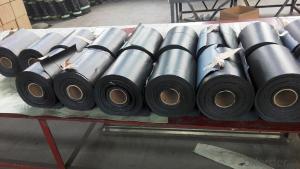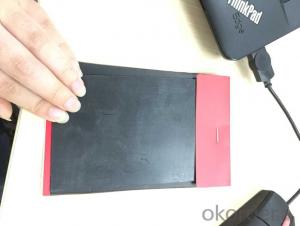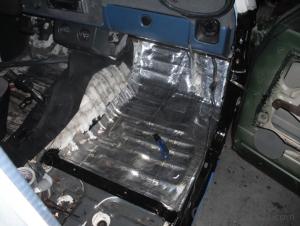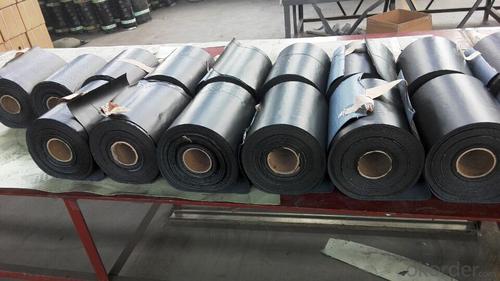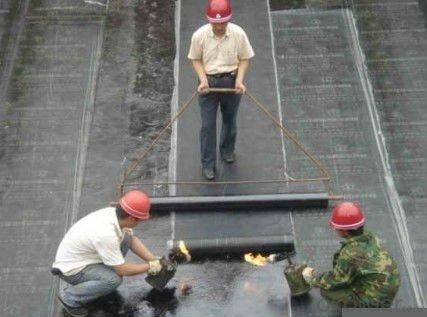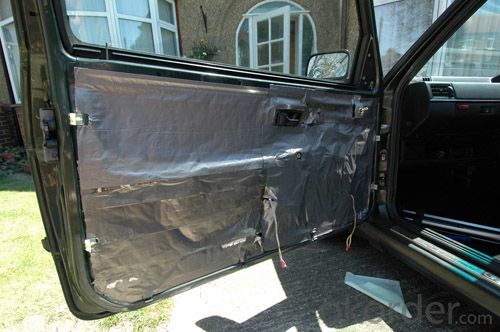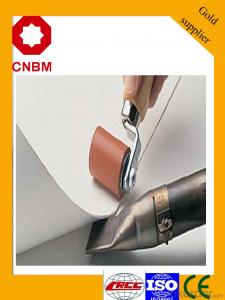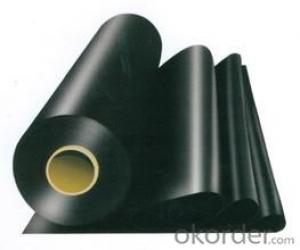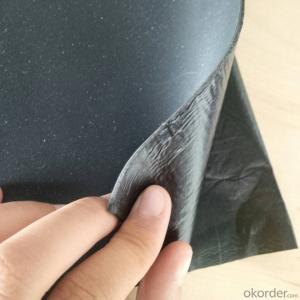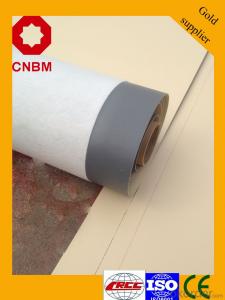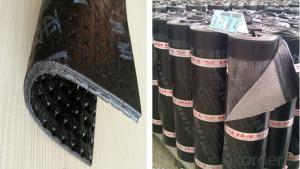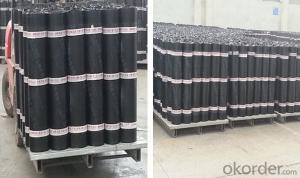SBS Elastomeric Polymer Bitumen Waterproof Roofing Membrane
- Loading Port:
- Tianjin
- Payment Terms:
- TT OR LC
- Min Order Qty:
- 5000 m²
- Supply Capability:
- 100000 m²/month
OKorder Service Pledge
OKorder Financial Service
You Might Also Like
Quick DetailsType:
Waterproof Membrane, Waterproof membrane Place of Origin: China (Mainland)
Surface film: PE, SAND, SCHIST,aluminum Thickness: 2.0mm~5.0mm Length: 10.0m
Width: 1.0m Usage: waterproofing for roof, understand,etc
Packaging & DeliveryPackaging Details: 10 sq.m./roll export package or as requirment
Delivery Detail: 15 days after receipt of deposit.
Specifications3mm SBS modified bitumen waterproof membrane
1) 2--5mm
2) Base:PY/G
3) Surface:PE / S / M / Al
No crack
a Only applicable to single mechanical fixed membrane construction way
B Only applicable to mineral surface bitumen waterproof membrane
C Only applicable to hot melt construction of membrane
Features
Good ability of anti-aging, anti-alkali, resistant to high temperature. High tensile strength and enlongation, which adapts to the contraction or crack of the base.
Application:
1. Make sure the base surface smooth, clean and dry(Moisture<9%), then paint the delicated agent on the base surface. start application till it is dry.< span="">
2. Application Method:
Heating the bottom surface of membrane and the roof deck surface by flam spray gun or other suitable appliances till the asphalt start to melt(not flowing), then spread. Using roller to compact the membrane so that it can firmly adhere to the base surface. The overlap on the long side should be 100mm and the short side should be 150mm.
3. After application, a careful inspection is required. Make sure there is no air bubble, no fold, no falling away etc to guarantee the waterproof life.
Package
the membrane is launched into the market in rolls 1m wide and 10m long.
Storage Conditions and Service life
Rolls must be vertically stored in roofed-over spaces. If the rolls have to be stored outdoors for a long period of time, then they must be covered with a protective layer in order to protect them against the sunlight. If the rolls are to be stowed without pallets, they they are not stacked one on top of another. In palletised stowage, two rows may be stacked one on top of the other.
Attentions for Construction
·
SBS / APP asphalt waterproof membrane, bituminous waterproof membrane
1. Membranes should be stored under dry and ventilated conditions.
2. Different types of membranes must be piled separately.
3. Under usual condition, storage period is one year since production date.
4. Membrane roll should be put vertically during transportation. It should be kept away
from sunshine and rainwater.
Installation Sketch point
Clean the substrate using broom or high pressure dusty cleaner.
Apply primer
Heat the membrane bottom using a high temperature flame gun.
Push forward while the primer and membrane oil melted
Use a roller to push hard the membrane surface to ensure it stick firmly
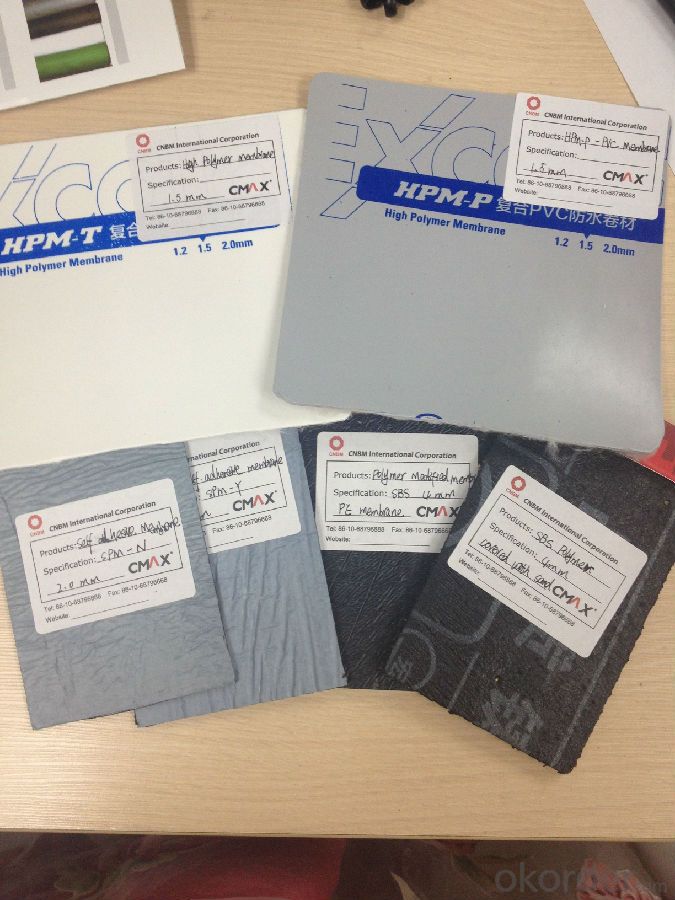
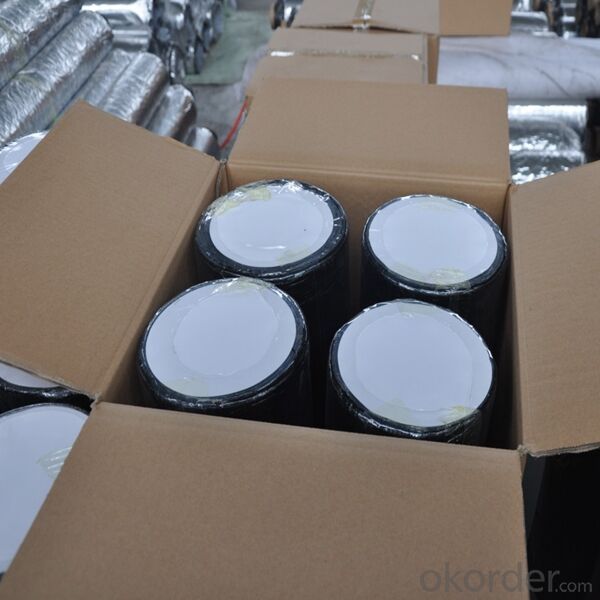
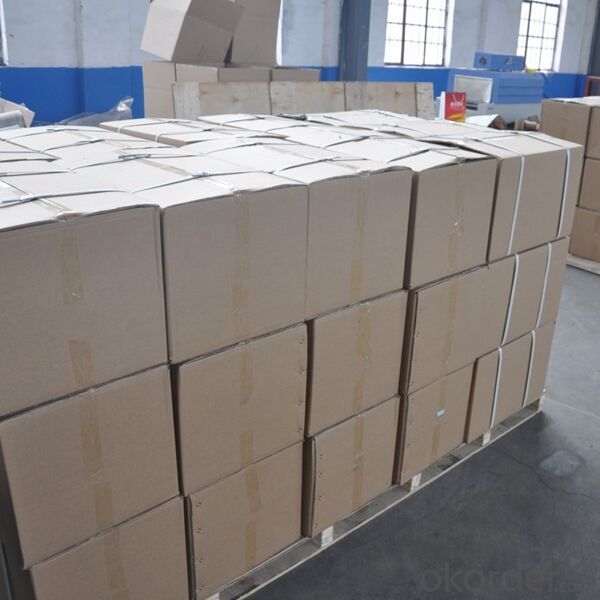
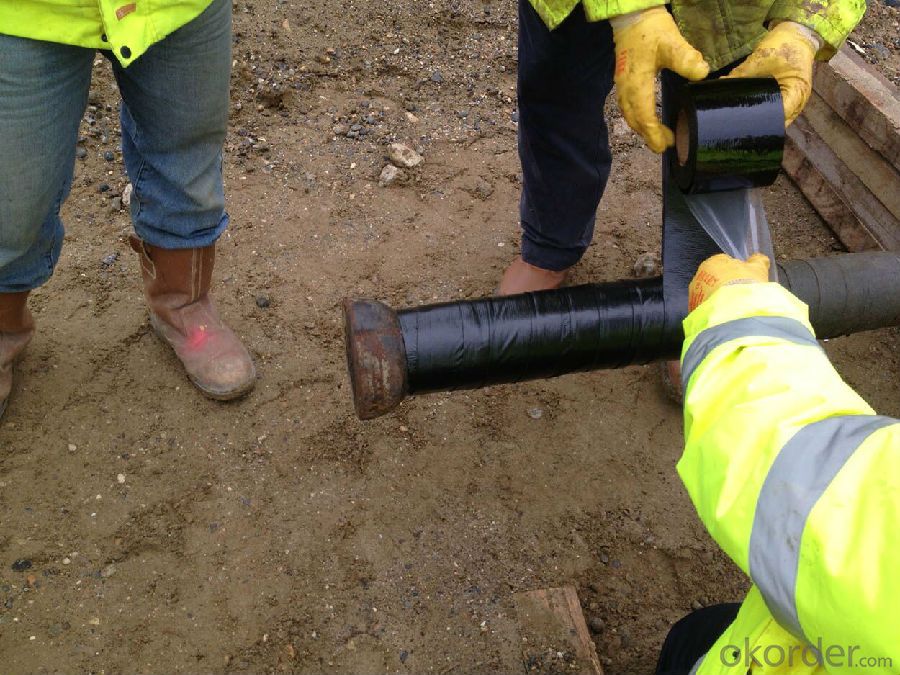
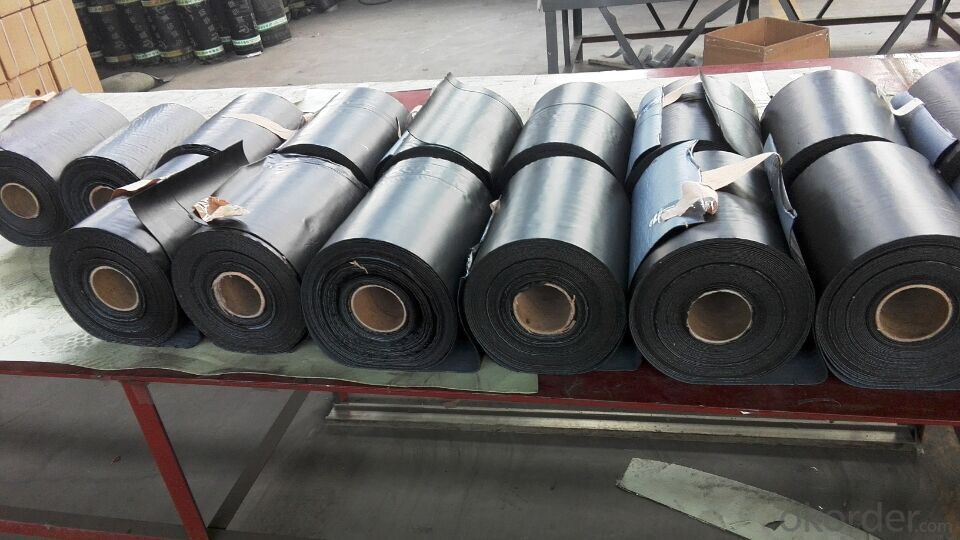
- Q: Can a waterproofing membrane be used in bridge decks or roadways?
- Yes, a waterproofing membrane can be used in bridge decks or roadways. A waterproofing membrane is a protective layer that is applied to the surface of a structure to prevent water infiltration, thereby increasing the lifespan of the structure. In the case of bridge decks and roadways, which are constantly exposed to harsh weather conditions and heavy traffic, the use of a waterproofing membrane is crucial. Bridge decks and roadways are vulnerable to damage caused by water penetration, such as corrosion of steel reinforcements and the deterioration of concrete. By applying a waterproofing membrane, a barrier is created that prevents water from seeping into the structural elements, reducing the risk of corrosion and extending the durability of the bridge or roadway. Furthermore, a waterproofing membrane can also help to prevent the formation of cracks and potholes, which are often caused by the freeze-thaw cycle and the penetration of water. By keeping the surface of the bridge deck or roadway dry, the membrane helps to maintain its structural integrity and prevent the need for costly repairs or premature replacement. It is worth noting that when considering the use of a waterproofing membrane in bridge decks or roadways, factors such as material selection, installation techniques, and maintenance should be carefully considered. The chosen membrane should be compatible with the materials used in the construction of the bridge or roadway, and the installation process must be carried out properly to ensure a watertight seal. Regular maintenance and inspections should also be conducted to identify any potential issues or damage to the membrane, allowing for timely repairs and ensuring its effectiveness over time. Overall, the use of a waterproofing membrane in bridge decks or roadways is an effective solution to protect against water damage and extend the lifespan of these critical infrastructure elements.
- Q: Can a waterproofing membrane be used in areas with heavy foot traffic?
- Yes, a waterproofing membrane can be used in areas with heavy foot traffic. In fact, many waterproofing membranes are specifically designed to withstand heavy use and abuse, making them ideal for high-traffic areas such as walkways, balconies, and parking decks. These membranes are typically made from durable materials like rubber, PVC, or modified bitumen, which are resistant to wear and tear. Additionally, some membranes have a slip-resistant surface to improve safety in areas where people are walking. It's important to choose a waterproofing membrane that is suitable for the specific application and meets the required durability standards to ensure long-lasting protection in areas with heavy foot traffic.
- Q: Can a waterproofing membrane be used on precast gypsum surfaces?
- Precast gypsum surfaces, commonly utilized in construction for various building components like walls and ceilings, can benefit from the application of a waterproofing membrane. Without proper protection, these porous surfaces are susceptible to water damage. To safeguard precast gypsum, a waterproofing membrane serves as a barrier, preventing water infiltration. By creating a protective layer, it halts the seepage of water into the gypsum, thereby averting issues such as mold growth and deterioration. Multiple types of waterproofing membranes are available in the market, including liquid-applied membranes, sheet membranes, and cementitious coatings. These versatile options can adhere effectively to precast gypsum and other surface materials. When employing a waterproofing membrane on precast gypsum, it is vital to ensure the surface is devoid of any contaminants that could hinder the membrane's adhesion. The application process should adhere to the manufacturer's instructions, taking into account factors like temperature, humidity, and drying time. In summary, the application of a waterproofing membrane on precast gypsum surfaces is indeed possible and highly recommended for protection against water damage. Selecting the appropriate membrane type and following proper application techniques are crucial for optimal efficacy.
- Q: Can a waterproofing membrane be used in laundry rooms?
- Indeed, the utilization of a waterproofing membrane is viable in laundry rooms. These spaces are frequently subjected to water and humidity due to the presence of washing machines, sinks, and various water-related activities. The installation of a waterproofing membrane within the laundry room serves to avert any water harm that may affect the walls, floors, and other essential components. It functions as a barrier that obstructs water infiltration, guaranteeing that any accumulated water or moisture within the room does not permeate the underlying surfaces. This proves particularly advantageous for laundry rooms situated on higher levels or in regions prone to excessive humidity or flooding. By employing a waterproofing membrane, homeowners can safeguard their laundry rooms against potential issues associated with water, such as the growth of mold, deterioration, or structural impairment.
- Q: Can a waterproofing membrane be used in conjunction with concrete repair or restoration?
- Yes, a waterproofing membrane can be used in conjunction with concrete repair or restoration. The membrane acts as an additional protective layer to prevent water penetration and enhance the durability and longevity of the repaired or restored concrete structure.
- Q: Are waterproofing membranes suitable for bridge abutments?
- Yes, waterproofing membranes are suitable for bridge abutments. Bridge abutments are the structures that support the ends of a bridge, and they are typically exposed to a significant amount of moisture and water. Waterproofing membranes are designed to provide a protective barrier against water and moisture intrusion, making them an ideal solution for bridge abutments. These membranes are typically made from materials such as bitumen, PVC, or EPDM, which are highly resistant to water penetration. Additionally, waterproofing membranes can also provide protection against other factors such as UV rays, chemicals, and temperature fluctuations. By installing waterproofing membranes on bridge abutments, the risk of water damage, deterioration, and corrosion can be significantly reduced, leading to increased durability and longevity of the bridge structure.
- Q: Can a waterproofing membrane be used in historic buildings?
- Yes, a waterproofing membrane can be used in historic buildings. However, it is important to consider the specific needs and requirements of the building. The use of a waterproofing membrane should be carefully assessed and integrated into the building's preservation and conservation plans to ensure compatibility with its historic fabric and materials. Professional advice and expertise should be sought to ensure the appropriate selection and installation of the waterproofing membrane without compromising the building's historic integrity.
- Q: Does a waterproofing membrane prevent water damage to building materials?
- Yes, a waterproofing membrane is designed to create a barrier that prevents water from seeping into building materials, thus effectively preventing water damage.
- Q: Can waterproofing membranes be applied over existing surfaces?
- Applying waterproofing membranes over existing surfaces is indeed a common practice in construction and renovation projects. These membranes serve as a protective barrier against water infiltration and can be used on various surfaces like concrete, wood, metal, or even other waterproofing systems. By applying a waterproofing membrane over an existing surface, it effectively prevents water damage such as leaks, mold growth, and structural deterioration. However, it is crucial to properly prepare and clean the existing surface before applying the membrane to ensure optimal adhesion and performance. It is also advisable to seek guidance from a professional waterproofing contractor to determine the most suitable membrane type and installation method for your specific project requirements.
- Q: Are waterproofing membranes resistant to hydrocarbons?
- Yes, waterproofing membranes are generally resistant to hydrocarbons. Waterproofing membranes are designed to provide a barrier against water penetration and are often made from materials such as bitumen, PVC, TPO, or EPDM. These materials have inherent resistance to hydrocarbons and can withstand exposure to various types of hydrocarbon-based substances such as oil, gasoline, diesel, and other petroleum-based products. This resistance ensures that the waterproofing membrane remains intact and effective in preventing water infiltration even when exposed to hydrocarbons. However, it is important to note that the specific resistance of a waterproofing membrane to hydrocarbons may vary depending on the material used and its quality. Therefore, it is always recommended to consult the manufacturer's specifications and guidelines to ensure the appropriate selection and installation of a waterproofing membrane for specific hydrocarbon-resistant requirements.
Send your message to us
SBS Elastomeric Polymer Bitumen Waterproof Roofing Membrane
- Loading Port:
- Tianjin
- Payment Terms:
- TT OR LC
- Min Order Qty:
- 5000 m²
- Supply Capability:
- 100000 m²/month
OKorder Service Pledge
OKorder Financial Service
Similar products
Hot products
Hot Searches
Related keywords
